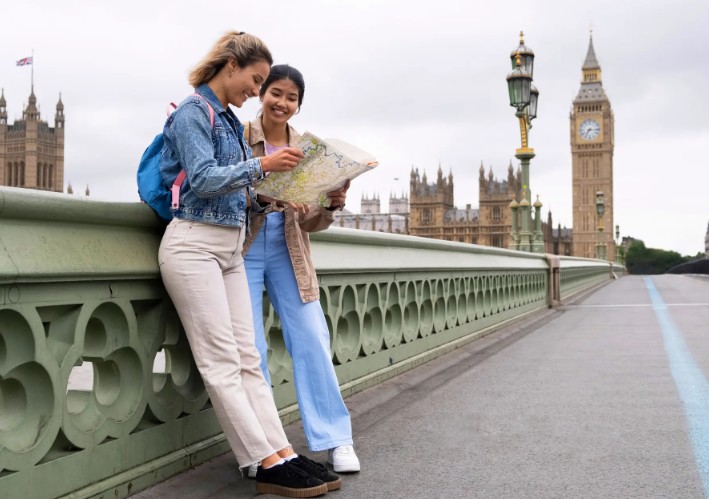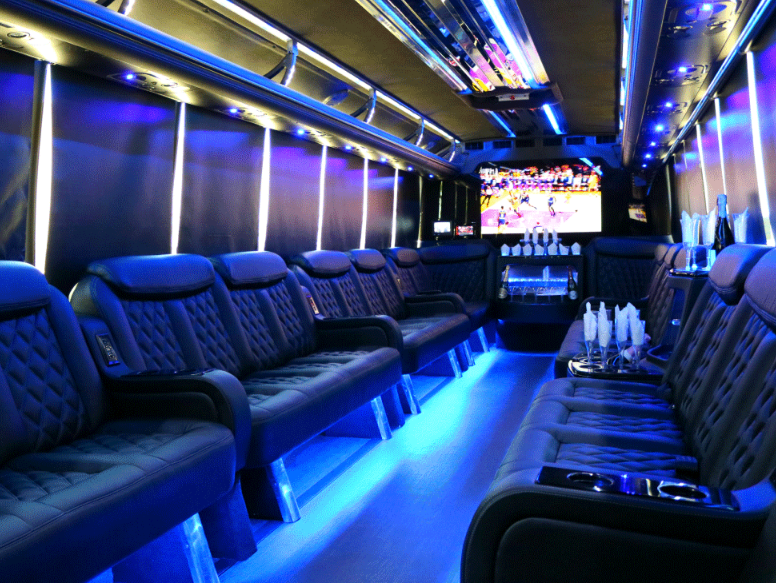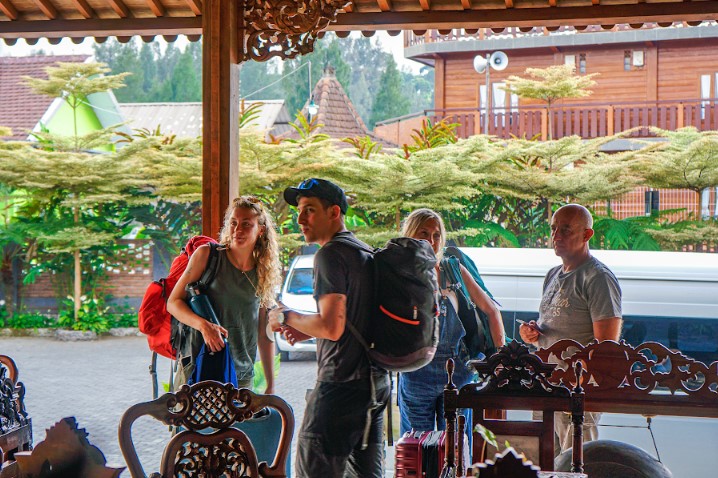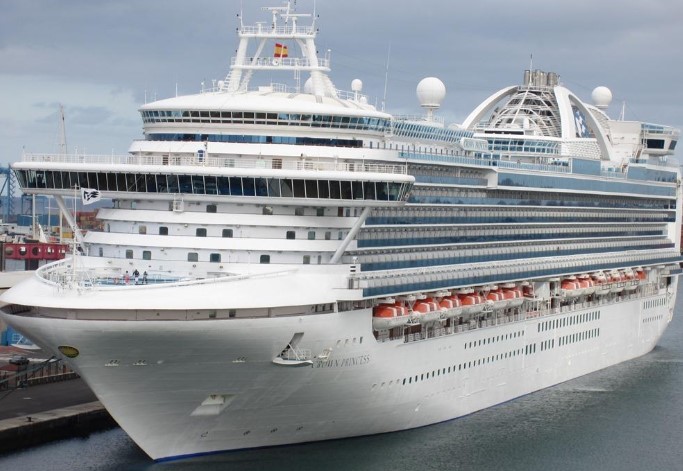Travel has been my inspiration ever since I was a pre-teen, daydreaming about the Himalayas. But in my eighth decade, I began to realize that I would never again navigate the rockslides between Nepal into Tibet or hike from the Rome train station to Trastevere. My bum knee prevents me from even hopping on (or off) the hop-on-hop-off bus tours.
I know that I am not alone. According to the Centers for Disease Control and Prevention, in 2020 some 40 percent of people over the age of 65 reported having a disability.
This is a cohort (and for businesses, a market) that cannot be ignored.
Baby boomers want to take to the road, with or without disabilities. Over the next 8 years, some 30.9 million disabled travelers are expected to hit the roads. According to AARP The Magazine, many boomers have been saving for travel during the pandemic and are “more likely to have set aside unused travel funds for future getaways.”
Older folks will travel in the future — by foot, in wheelchairs, on cruises, and on bucket list trips. When getting around isn’t as easy as it used to be, you can still follow your inspiration and travel the world. But finding travel that is appropriate for one’s specific challenges requires a substantial investment of time, energy, and sometimes, additional costs. Here are my tips to make it easier.

1. Look For Travel Companies That Allow For Different Exertion Levels
I’ve traveled with Road Scholar in the past because it allows me to choose from a variety of activity levels for my trip.
Their programs include different exertion levels for trips by land, by sea, and for outdoor hikes and camping. Due to my bum knee, I have certainly been more attracted to their offerings in their “Easy Going” activity level, which are education focused and require minimal walking. If you want to turn it up a notch or two, you can choose the walking-heavier “On Your Feet” journeys, the more moderate “Keep The Pace” adventures, or the challenging “Let’s Go” trips, just to name a few. There is even a “Choose Your Pace” level for some trips, with several choices of activities available each day.
Other travel companies with tiered activity levels are Intrepid Travel, Adventures Abroad, and Smithsonian Journeys.
From traveling with Road Scholar, I came to learn that there were many methods of making a trip easier. For instance:
Carrying Luggage
Use a cross-body bag so that you have your hands free to carry lightweight luggage. And, of course, travel as light as you can so that you have constant control of what you have.

Stability Aids
Bring a cane, walker (or walker with wheels), walking sticks, or other equipment to help keep your balance. I sometimes use a portable folding seat. It certainly makes life easier, knowing that you can rest when you like!
Communicate Your Needs
Tell people when you need help. Lots of folks have issues that are not obvious at first glance, so communicating your needs is the best way to get support.

2. If You Use A Wheelchair Or Scooter, Consider Companies Geared Toward You
Wheelchair and scooter users should consider Wheel the World.
Co-founder Alvaro Silberstein was paralyzed from the chest down at 18, but that has not stopped him. He has traveled via wheelchair to five continents. Now, through Wheel the World, he arranges journeys for those similarly challenged. In fact, he offers more than 80 destinations for his clients around the world and can also arrange solo travel or private group trips.
Other great companies for wheelchair and scooter travel are Travel for All, Planet Abled, and Sage Traveling.
3. Hit The High Seas (With An Accessible Cruise)
Many mobility-challenged individuals find that cruises are the easiest way for them to travel to multiple destinations. A growing number of cruise lines offer accessible cabins and shore excursions, as well as boarding and deboarding assistance. Some have pool lifts, special seating areas, and accessible restrooms.
Individual ships offering accessible wheelchair travel include Royal Caribbean’s Symphony of the Seas, Holland America’s Koningsdam, and Celebrity Reflection.
Because there are many wheelchair and scooter travelers on cruise ships, make sure that you leave enough time to plan for shore excursions and boarding/deboarding the ship.
4. Know Your Online Resources
New methods of research, new databases, new technical aids, and the abundance of ways to spread information about easy fixes are enabling the mobility-challenged to travel easier and safer.
I have a fiercely independent friend who has been wheelchair bound for many years. She has often talked about having access to information that helps her travel on her own. If you’re one of these independent travelers, here are some sites to help you find out where, when, and how you can plan trips on your own or with your family.
Mobility International USA (MIUSA)
Mobility International USA has created “partnerships, projects, training, and programs to advance the rights of people with disabilities globally.” They offer information about the United Nations Convention on the Rights of Persons with Disabilities, advocacy strategies, helpful publications, resource development, and accessibility guidance.
Society For Accessible Travel And Hospitality (SATH)
SATH provides information on everything from ideal destinations for wheelchair travelers to resources for travelers who are blind, deaf, or on the autism spectrum.
Lonely Planet
The venerable Lonely Planet provides free lists of travel agents and tour operators who specialize in disabled travel. They also publish the Accessible Travel Phrasebook (PDF), which features about 100 disability-related words and phrases in 35 languages, from Arabic to Vietnamese.
TravelAbility
Jake Steinman, the founder of TravelAbility, has forged relationships with scores of businesses, travel sites, and technology and publishing companies. He believes in the power to “unlock the intrinsic goodness of those who want to help.”
As part of TravelAbility, Steinman also created LaunchPad, a major showcase for adaptive technology and innovations that make travel easier for people with disabilities. High-tech products discussed have included a wheelchair that folds into a carry-on; WHILL, a power wheelchair summoned with an app; and the Alinker, a “non-motorized walking bike without pedals.”

5. Know Your Rights
What rights do you have as a wheelchair or scooter traveler in airports, hotels, or public transportation? Each country has its own rules. Before you book, make sure you know what obstacles you may face and plan accordingly. Here are some sites for information.
U.S. Department Of State And United Nations
According to the Travel with Disabilities section of the Department of State website, which is helpful in its own right, each country has its own laws about accessibility for people with disabilities.
Familiarize yourself with the laws of your intended destination before planning the trip. A good resource for this is the United Nations’ list of accessibility laws by country or area.
ADA/European Travel Standards
One of the biggest challenges is lodging because the word “accessible” can be freely interpreted by hotel providers. However, both the United States and the European Union support transportation rights for disabled travelers.
In the United States, the U.S. Access Board site lists the Americans with Disabilities Act standards.
The European Union has air, rail, bus, and ship passenger rights for disabled travelers. For all modes of transport, disabled travelers have the right to free assistance at terminals and on vehicles. The non-profit European Network for Accessible Tourism (ENAT) also provides information about access for disabled travelers in the E.U.
Some Tips For Traveling In Asia
There are challenges to finding information about accessible travel in Asia, but note that several cities in Asia — including Hong Kong, Seoul, and Shanghai — all have greater access to public transportation than do most major western cities.

6. Follow Your Dreams
A lot of intrepid older travelers are independent, feisty, and courageous. Their ability to travel with groups, families, or even on their own is pretty amazing and inspirational. We all want to head out into the world and see and experience what we’ve dreamed about all our lives. Where we go and how we maneuver may have changed, but limited mobility doesn’t mean limiting dreams.






More Stories
10 Power-Packed Suitcase Packing Tips for Effortless Travel
Unleashing Solo Adventures: Tips for Traveling Alone
Travel Tips for Beginners: Navigating Your Journey with Confidence